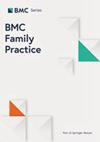Implementing decision aids for cardiovascular disease prevention: stakeholder interviews and case studies in Australian primary care
IF 3.2
3区 医学
Q1 MEDICINE, GENERAL & INTERNAL
引用次数: 0
Abstract
Australian cardiovascular disease (CVD) prevention guidelines recommend absolute CVD risk assessment, but less than half of eligible patients have the required risk factors recorded due to fragmented implementation over the last decade. Co-designed decision aids for general practitioners (GPs) and consumers have been developed that improve knowledge barriers to guideline-recommended CVD risk assessment and management. This study used a stakeholder consultation process to identify and pilot test the feasibility of implementation strategies for these decision aids in Australian primary care. This mixed methods study included: (1) stakeholder consultation to map existing implementation strategies (2018-20); (2) interviews with 29 Primary Health Network (PHN) staff from all Australian states and territories to identify new implementation opportunities (2021); (3) pilot testing the feasibility of low, medium, and high resource implementation strategies (2019-21). Framework Analysis was used for qualitative data and Google analytics provided decision support usage data over time. Informal stakeholder discussions indicated a need to partner with existing programs delivered by the Heart Foundation and PHNs. PHN interviews identified the importance of linking decision aids with GP education resources, quality improvement activities, and consumer-focused prevention programs. Participants highlighted the importance of integration with general practice processes, such as business models, workflows, medical records and clinical audit software. Specific implementation strategies were identified as feasible to pilot during COVID-19: (1) low resource: adding website links to local health area guidelines for clinicians and a Heart Foundation toolkit for primary care providers; (2) medium resource: presenting at GP education conferences and integrating the resources into audit and feedback reports; (3) high resource: auto-populate the risk assessment and decision aids from patient records via clinical audit software. This research identified a wide range of feasible strategies to implement decision aids for CVD risk assessment and management. The findings will inform the translation of new CVD guidelines in primary care. Future research will use economic evaluation to explore the added value of higher versus lower resource implementation strategies.实施心血管疾病预防决策辅助工具:利益相关者访谈和澳大利亚初级保健案例研究
澳大利亚心血管疾病(CVD)预防指南建议进行绝对的心血管疾病风险评估,但由于过去十年来的实施工作比较零散,只有不到一半的合格患者记录了所需的风险因素。为全科医生(GP)和消费者共同设计的决策辅助工具已经开发出来,可改善指南推荐的心血管疾病风险评估和管理的知识障碍。本研究采用利益相关者咨询流程,以确定并试点测试这些决策辅助工具在澳大利亚初级保健中的实施策略的可行性。这项混合方法研究包括(1) 利益相关者咨询,绘制现有实施策略图(2018-20 年);(2) 对来自澳大利亚各州和地区的 29 名初级医疗网络(PHN)工作人员进行访谈,以确定新的实施机会(2021 年);(3) 对低、中、高资源实施策略的可行性进行试点测试(2019-21 年)。框架分析法用于定性数据,谷歌分析法提供决策支持随时间推移的使用数据。利益相关者的非正式讨论表明,有必要与心脏基金会和公共卫生网络提供的现有计划合作。公共卫生网络访谈指出了将决策支持与全科医生教育资源、质量改进活动以及以消费者为中心的预防计划联系起来的重要性。参与者强调了与全科医生流程整合的重要性,如业务模式、工作流程、医疗记录和临床审计软件。与会者认为在 COVID-19 期间试行具体的实施策略是可行的:(1) 低资源:为临床医生添加当地健康领域指南的网站链接,为初级保健提供者添加心脏基金会工具包;(2) 中等资源:在全科医生教育会议上介绍,并将资源整合到审计和反馈报告中;(3) 高资源:通过临床审计软件从患者记录中自动填充风险评估和决策辅助工具。这项研究为心血管疾病风险评估和管理决策辅助工具的实施确定了多种可行策略。研究结果将为基层医疗机构转化新的心血管疾病指南提供参考。未来的研究将利用经济评估来探讨资源较多与资源较少的实施策略的附加值。
本文章由计算机程序翻译,如有差异,请以英文原文为准。
求助全文
约1分钟内获得全文
求助全文
来源期刊

BMC Family Practice
医学-医学:内科
CiteScore
3.20
自引率
0.00%
发文量
0
审稿时长
4-8 weeks
期刊介绍:
BMC Family Practice is an open access, peer-reviewed journal that considers articles on all aspects of primary health care research. The journal has a special focus on clinical decision making and management, continuing professional education, service utilization, needs and demand, and the organization and delivery of primary care and care in the community.
 求助内容:
求助内容: 应助结果提醒方式:
应助结果提醒方式:


